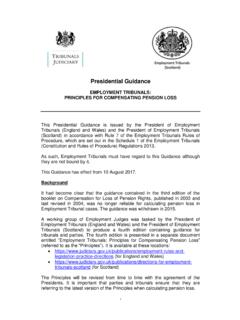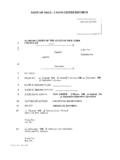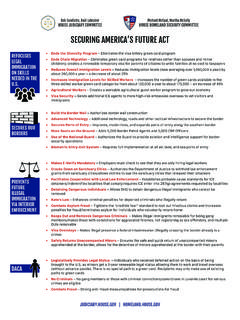Transcription of Equal Treatment Bench Book - judiciary.uk
1 Equal Treatment Bench Book .. February 2018 Contents Equal Treatment Bench Book February 2018 i Contents Foreword .. 1 Acknowledgments .. 2 Introduction: Equal Treatment and the Judge .. 3 Introduction .. 3 Good communication .. 4 Demonstrating fairness .. 5 Diversity .. 6 A note on terminology .. 6 Chapter 1 Litigants in Person and Lay Representatives .. 1-1 Contents ..1-1 Overview ..1-2 Litigants in person ( LIPs ) ..1-4 The courts duty to litigants in person ..1-5 Difficulties faced by LIPs ..1-5 Ways to help ..1-6 Holding the confidence of both sides ..1-6 Sources of outside help and information for LIPs ..1-7 Particular areas of difficulty ..1-7 Language ..1-7 Disability ..1-7 Social and educational background ..1-8 Common procedural misunderstandings in case preparation.
2 1-8 Statements of case / Pleadings and limitation periods ..1-8 Case management: understanding directions and court orders ..1-8 Disclosure of documents ..1-12 Understanding the importance of documentary evidence ..1-12 Trial bundles ..1-13 Witnesses and witness statements ..1-13 Adjournments ..1- 14 Sources of Compromise ..1-15 Difficulties at the hearing and how to help ..1-16 Contents Equal Treatment Bench Book February 2018 ii Introductory explanations by the judge ..1-16 The real issues of the case ..1-17 Advocacy .. 1-17 Giving judgment ..1-18 Criminal cases ..1-18 Useful guidance materials ..1-18 Guilty pleas ..1-18 The value of representation ..1-19 Assistance during the trial ..1-19 Assistance and representation from lay representatives ..1-20 Overview.
3 1-20 McKenzie Friends ..1-20 Personal Support Unit & Citizen's Advice Bureau ..1-25 Rights of audience ..1-25 Small Claims ..1-29 Housing Authority Officers and Employees of Arm s Length Management Organisations [ALMOs] ..1-29 Companies ..1-30 Official Receivers ..1-30 European lawyers ..1-30 Official Solicitor ..1-30 Representing adults who lack capacity ..1-30 References and resources ..1-31 References ..1-31 Other ..1-31 Chapter 2 Children, Young People and Vulnerable Adults .. 2-1 Contents .. 2-1 Overview .. 2-2 Who is covered by this chapter? .. 2-5 The rights of young and vulnerable witnesses to effective participation .. 2-5 Vulnerability of young and adult offenders .. 2-7 The duty to safeguard children and vulnerable adults .. 2-8 Safeguarding generally .. 2-8 Safeguarding in courts and tribunals.
4 2-8 The judiciary s role in safeguarding .. 2-9 Contents Equal Treatment Bench Book February 2018 iii Competence .. 2-10 Requirements to take a flexible approach .. 2-11 Expedited time-scales and active case management .. 2-13 Rules and materials .. 2-13 Timetabling .. 2-13 Avoiding adjournments .. 2-15 Scheduling a clean start to witness testimony .. 2-15 Special measures and related adjustments .. 2-17 Special measures .. 2-17 Disapplying special measures .. 2-18 Avoiding confrontation .. 2-18 Screens .. 2-18 Evidence by live link .. 2-18 Refreshing witness memory .. 2-20 Intermediaries: facilitating complete, coherent and accurate communication .. 2-21 The function .. 2-21 Should an intermediary be appointed? .. 2-23 If the application is contested .. 2-23 If the intermediary is not available on the day.
5 2-24 Intermediaries in family cases .. 2-24 Non-registered intermediaries for vulnerable defendants in criminal proceedings .. 2-25 Sources of other information about intermediaries .. 2-26 Communication aids recommended by intermediaries .. 2-26 Ground rules hearings .. 2-26 Function of ground rules hearings .. 2-26 Topics for discussion at a ground rules hearing .. 2-27 Trial practice note of boundaries .. 2-28 Sources of other information on ground rules hearings .. 2-28 Adjustments to cross-examination .. 2-29 The court s duty to control questioning .. 2-29 Limiting the length of cross-examination .. 2-30 Questioning techniques to avoid .. 2-30 Questions about third party material .. 2-32 Reporting restrictions .. 2-32 Contents Equal Treatment Bench Book February 2018 iv Communicating at trial.
6 2-33 Before the vulnerable person gives evidence .. 2-33 Simplified instructions from the judge or magistrate .. 2-34 While the vulnerable person is giving evidence .. 2-34 Information for the jury .. 2-35 Further examples of a flexible approach (disability) .. 2-36 The importance of routine feedback .. 2-37 References and resources .. 2-37 References .. 2-37 The Advocate s Gateway .. 2-39 Cases .. 2-39 Conventions .. 2-40 Chapter 3 Physical Disability .. 3-1 Contents .. 3-1 Overview .. 3-2 What is physical disability? .. 3-4 Why this chapter matters .. 3-4 Difficulties the court process may pose for disabled people .. 3-5 Identifying an individual s needs .. 3-6 Necessary advance planning .. 3-6 Consultation, case management and ground rules hearings .. 3-7 Adjustments for case preparation.
7 3-7 Adjustments for the hearing .. 3-8 General examples of adjustment .. 3-8 Breaks and shorter hours .. 3-10 Communication .. 3-10 Representation .. 3-11 What if the individual does not raise the subject of disability? .. 3-11 Criminal court procedure statutory measures .. 3-11 Jury service and disability .. 3-12 Acceptable terminology .. 3-13 How to discuss someone s possible needs in court .. 3-13 The social model v the medical model of disability .. 3-13 Use of terms .. 3-14 The legal definition of disability .. 3-15 Contents Equal Treatment Bench Book February 2018 v References and resources .. 3-15 References .. 3-15 Cases .. 3-15 Conventions .. 3-15 Chapter 4 Mental Disability .. 4-1 Contents .. 4-1 Overview .. 4-2 What is mental disability? .. 4-6 Prevalence of mental health difficulties.
8 4-6 Why this chapter matters .. 4-7 Difficulties the court process may pose for mentally disabled people .. 4-8 Identifying an individual s needs .. 4-9 Necessary advance planning .. 4-9 Consultation, case management and ground rules hearings .. 4-10 Adjustments for case preparation .. 4-10 Adjustments for the hearing .. 4-12 General examples of adjustment .. 4-12 Breaks and shorter hours .. 4-13 Communication .. 4-14 Representation .. 4-16 What if the individual does not raise the subject of disability? .. 4-16 Criminal court procedure statutory measures .. 4-17 Mental health: defendants and the criminal justice system .. 4-18 Prisoners and mental health .. 4-18 Ways to find out whether the defendant has a mental health condition .. 4-19 Mental Health Liaison and Diversion Services.
9 4-19 Bail and remand decisions .. 4-20 The trial .. 4-20 Sentencing .. 4-20 Veterans .. 4-22 Mental health .. 4-22 The cause of veterans mental health difficulties .. 4-22 Veterans and the criminal justice system .. 4-23 The Armed Forces Covenant .. 4-24 Acceptable terminology .. 4-24 Contents Equal Treatment Bench Book February 2018 vi How to discuss someone s possible needs in court .. 4-24 The social model v the medical model of disability .. 4-24 Use of terms .. 4-25 The legal definition of disability .. 4-25 The Equality Act 2010 .. 4-26 References and resources .. 4-26 Chapter 5 Capacity (Mental) .. 5-1 Contents .. 5-1 Overview .. 5-2 Criteria for assessing capacity .. 5-3 The approach of different professions .. 5-3 Assessment of capacity .. 5-4 Presumption of capacity.
10 5-4 Determining capacity .. 5-4 Evidence .. 5-5 Implications .. 5-5 Guidance .. 5-6 The Mental Capacity Act 2005 (MCA) .. 5-6 Background and overview .. 5-6 Fundamental principles .. 5-7 The concept of incapacity under the MCA .. 5-7 The concept of best interests under the MCA .. 5-7 Decision-making .. 5-8 The public bodies created by the MCA .. 5-8 The jurisdiction under the MCA .. 5-9 Civil and family proceedings procedure .. 5-9 The procedural rules .. 5-9 Protected party .. 5-10 Assessment of capacity .. 5-10 A protected party s representative (litigation friend) .. 5-11 Procedural consequences of being a protected party .. 5-12 Injunctions .. 5-13 Litigation friends in tribunals .. 5-13 References and resources .. 5-13 Contents Equal Treatment Bench Book February 2018 vii Chapter 6 Gender.















